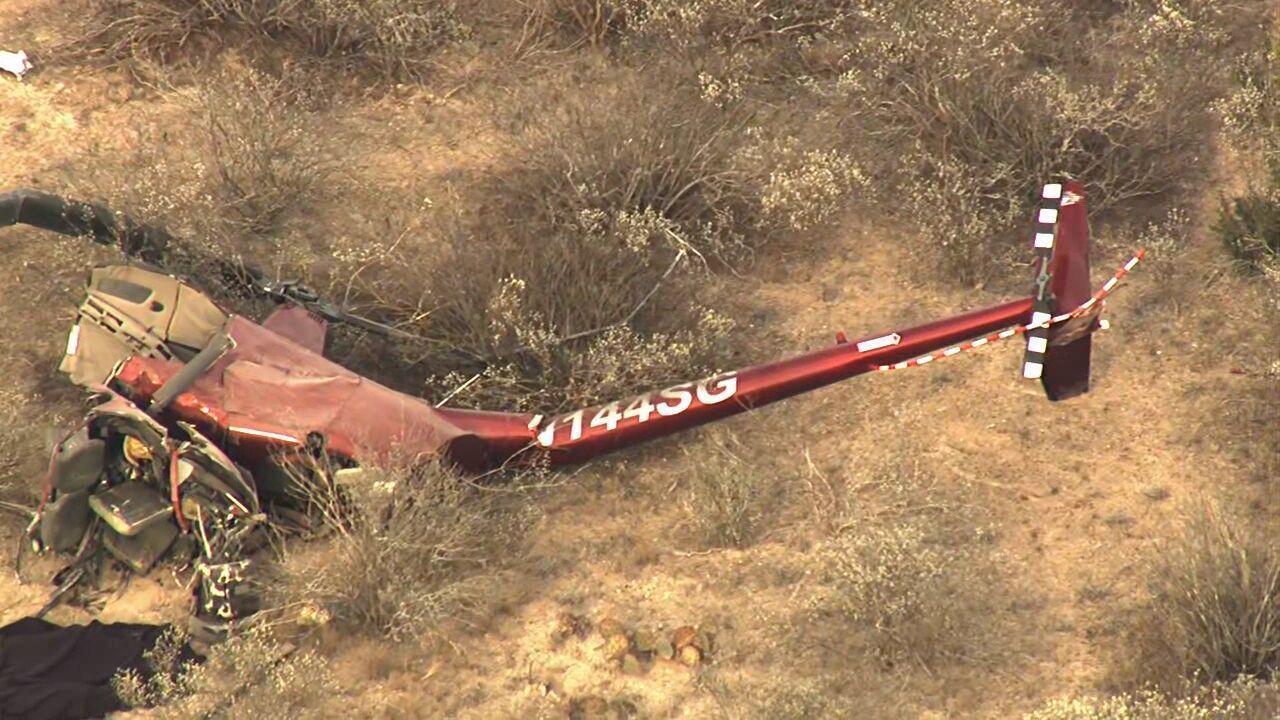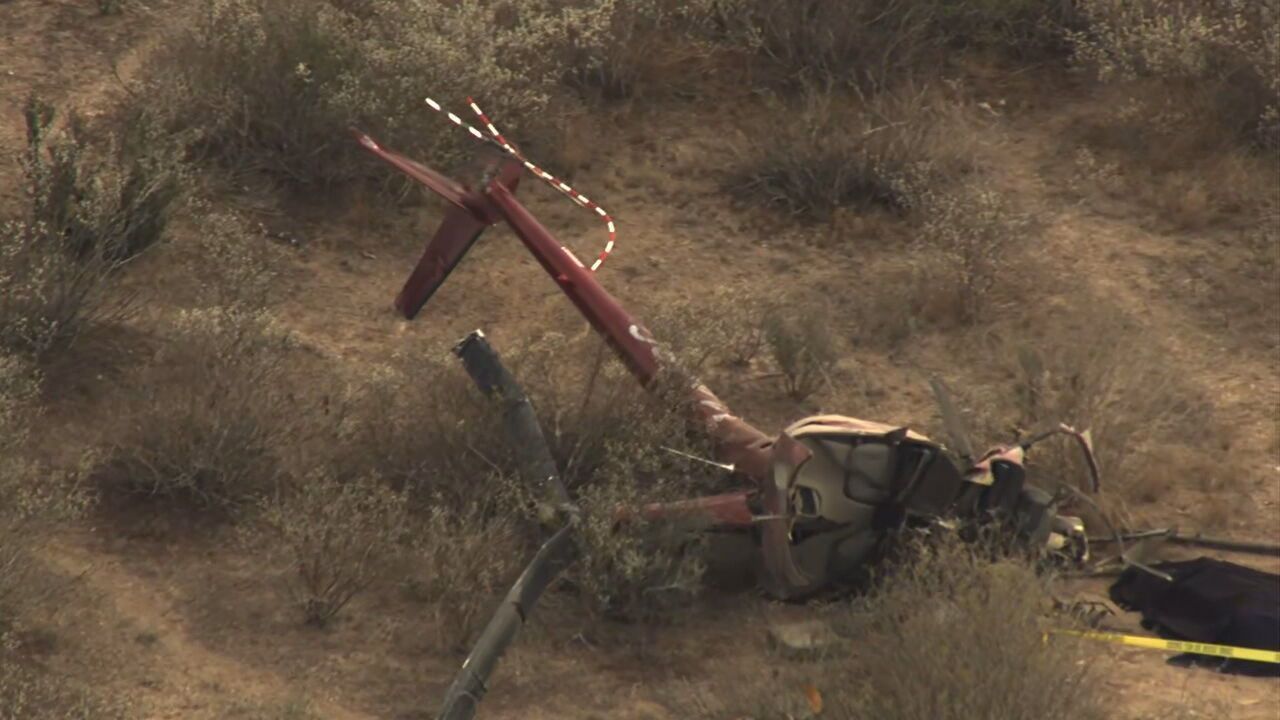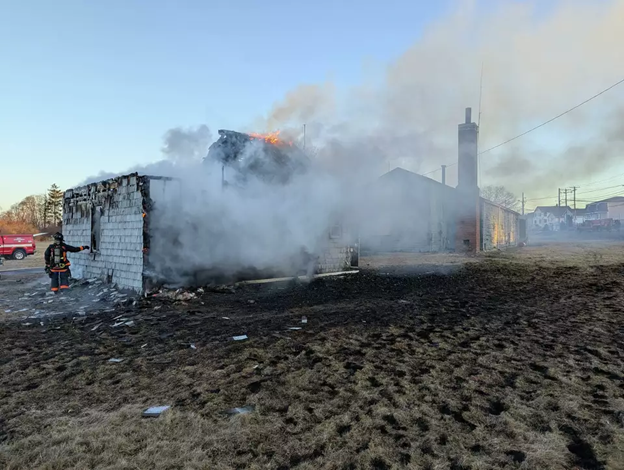ARFF Daily News
Published on:
Friday the 28th of February, 2025
Two killed in helicopter crash along U.S. Highway 90 in Kinney County, Texas
by SBG San Antonio | Jessica Warner
BRACKETTVILLE, Texas - A helicopter has crashed near the Kinney County and Uvalde County line in Southwest Texas.
Uvade County Constable Emmanuel Zaora posted on Facebook that the crash occurred near U.S. Highway 90, near Harris Ranch.
The Federal Aviation Administration (FAA) has announced that around 1:20 p.m., a Robinsoon R44 Helicopter crashed west of Uvalde with two souls on board.
Kinney County officials have reported that the two people on board succumbed to their injuries sustained in the crash.
We're still working to determine who was operating the helicopter at the time of the crash.
A full preliminary report on the incident is expected to be released on Friday, as well as the aircraft registration number and who may have been operating the aircraft.
Owners of the Harris Ranch Uvalde, the site where the aircraft reportedly crashed, confirmed no person from Hometown Heroes Outdoors, a nonprofit that offers first responders and veterans hunting excursions, was on board the aircraft.
The National Transportation Safety Board has reportedly began investigating the situation.


Civil Air Patrol building catches fire at Sikorsky Memorial Airport, official says
By Peter Yankowski, Staff Writer
Firefighters responded Friday morning to an old Civil Air Patrol building that caught fire at Sikorsky Memorial Airport, a Bridgeport spokesperson said.
Around 6:30 a.m., Bridgeport firefighters were called to the airport for a reported structure fire said Shawna White, the city spokesperson.
Stratford firefighters were also dispatched and arrived first, White said.
Responding units "encountered a one and a half story building fully involved," White said. "The building was an old Civil Air Patrol building," she added.
No one was hurt in the fire, including first responders, according to White.
Bridgeport firefighters said in a Facebook post that the fire was brought under control within about 30 minutes. Photos posted by the agency showed the fire completely consumed most of the structure.
The Civil Air Patrol is a U.S. Air Force auxiliary run through a nonprofit that's chartered by Congress. The volunteer organization's work includes assisting during disasters and in search-and-rescue operations.
https://www.darientimes.com/news/article/bridgeport-sikorsky-memorial-airport-fire-20193953.php

DC fire boat captain, diver describe ‘nightmare' Potomac plane crash scene for 1st time
“I don’t think anything, regardless of time on job and what you’ve see in your careers, ever prepares you for the magnitude of what we saw that night," DC Fire and EMS marine pilot CJ Isbell said
By Mark Segraves, News4 Reporter
For the first time since the plane crash over the Potomac River that claimed 67 lives, two D.C. firefighters who were among the first to arrive on the scene shared their stories.
A DC Fire and EMS fire boat captain and a dive team member who helped recover victims told NBC Washington what they saw that night and how they’re coping with trauma.
Steve Hater, with the dive team, and CJ Isbell, a marine pilot, both have spent years with the department. What they saw after a passenger plane and an Army helicopter crashed on Jan. 29 was like nothing they had ever seen, though.
“Having some years of experience and seeing a lot of things, that night – it’s some of the worst things imaginable,” Isbell said. “It was one of those situations where it just didn’t seem to stop. Just because of the sheer volume, the number of people, the area, the debris field.”
He called the scene a “nightmare.”
“It’s something you expect to see in movies, not real-life in D.C.,” Isbell said.
“I don’t think anything, regardless of time on job and what you’ve see in your careers, ever prepares you for the magnitude of what we saw that night,” Hater said.
‘Crash, crash, crash’
Isbell recalled the moment he learned of the catastrophe from air traffic control.
“The phone rang and they immediately said, ‘Crash, crash, crash.’ So we immediately grabbed our gear and ran down to the boats,” he said.
“As we came around Hains Point, it was a typical night. It was cold, windy, dark and quiet. So, we had really no indication of where the aircraft was. We headed south, and that's when we started to smell the jet fuel. We're outfitted with night vision and thermal imaging equipment. So, from the time of impact to the time of us arriving at the fuselage and starting to locate victims was less than 10 minutes,” he said.
“We saw part of the fuselage sticking out of the water, large debris field, lots of jet fuel. We went immediately to the fuselage, and for us, we started to recover some victims that were right at the fuselage. But seeing some habitable space potential for survivors in the fuselage, we came up and started to search inside the fuselage, for the hope that there may be a space for a survivor,” Isbell continued.
Hater was one of the first divers to plunge into the river that night.
“We've prided ourselves on training for worst-case scenarios. We just didn't expect this was the worst-case scenario,” he said. “Obviously, it was cold, dark, you know. The smell of jet fuel was everywhere. The amount of lights from first responders on shore and on the river and searchlights and the helicopters overhead was borderline pushing sensory overload, trying to make sense of everything.”
“That night was an anomaly compared to typical underwater conditions around here. The visibility was actually really clear, partially due to cold water, cold weather, cold temps, the ice that we had in the days and weeks prior,” Hater continued. “We probably had 6 feet or so of visibility, which is usually unheard of. As far as what you saw underneath there, it was a mangled mess that you were trying to make sense of. Like, what am I, you know, what am I looking at here?”
Coping with trauma
Both men talked about the trauma they and others who helped in the recovery process are dealing with.
“I've talked to some people, and my wife and the family support. Talking to the brothers, talking to the ones that were there. You know, being able to openly talk is probably, I'd say, one of the bigger helps for me,” Hater said.
Isbell also pointed to the help of fellow first responders.
“It still seems surreal. But being around our fellow peers who were there to be able to discuss … because the average public can't quite understand exactly all of what you've seen and done. So, being able to communicate that – and then the mental health professionals giving you the tools to help work through some of those things,” he said.
Hater and Isbell are just two of the hundreds of first responders from multiple agencies from D.C., Maryland and Virginia who took part in the recovery mission.
https://www.nbcwashington.com/news/local/dc-fire-boat-captain-diver-describe-nightmare-potomac-plane-crash-scene-for-1st-time/3854895/

NTSB Final Report: Diamond Aircraft Ind GMBH DA 42 NG
Pilot’s Failure To Maintain Control During An Approach To Land, Which Resulted In A Hard Landing
Location: Oshkosh, Wisconsin Accident Number: WPR24LA256
Date & Time: July 26, 2024, 07:15 Local Registration: N94NG
Aircraft: Diamond Aircraft Ind GMBH DA 42 NG Aircraft Damage: Substantial
Defining Event: Hard landing Injuries: 3 None
Flight Conducted Under: Part 91: General aviation - Personal
Analysis: The pilot of the multi-engine, retractable landing gear airplane reported that, while on final approach to land, he allowed the airplane’s airspeed to decay. He attempted to regain airspeed by reducing his bank angle and pitching the nose down; however, the airplane landed hard and the left main landing gear collapsed.
The airplane sustained substantial damage to the rudder.
The pilot reported that there were no preaccident mechanical failures or malfunctions with the airplane that would have precluded normal operation.
Probable Cause and Findings: The National Transportation Safety Board determines the probable cause(s) of this accident to be -- The pilot’s failure to maintain control during an approach to land, which resulted in a hard landing.
FMI: www.ntsb.gov

Today in History
50 Years ago today: On 28 February 1975 A Sikorsky S-58ET operated by VOTEC crashed near Baixio, Brazil, killing 12; the pilot survived.
Date: Friday 28 February 1975
Time: 08:30
Type: Sikorsky S-58ET
Owner/operator: VOTEC Táxi Aéreo
Registration: PT-HFR
MSN: 58-1538
Fatalities: Fatalities: 12 / Occupants: 13
Other fatalities: 0
Aircraft damage: Destroyed
Category: Accident
Location: Baixio, RN - Brazil
Phase: En route
Nature: Passenger - Non-Scheduled/charter/Air Taxi
Departure airport: Baixio, RN
Destination airport: Petrobrás Natal, RN
Investigating agency: CENIPA
Confidence Rating: Accident investigation report completed and information captured
Narrative:
A Sikorsky S-58ET operated by VOTEC crashed near Baixio, Brazil, killing 12; the pilot survived.
After approximately one hour of flight, at an altitude of 1,000 feet and with an indicated airspeed of 75 knots, a loud bang was heard from the upper part of the cockpit, followed by low-frequency vibrations. Immediately, the aircraft entered a sharp left turn as the nose dipped, coinciding with the sounding of the low rotation alarm. The pilot lowered the collective to recover the rotation and tried in every way to level the aircraft, but without success. The helicopter rapidly descended to the ground, where it crashed, followed by an explosion.
The pilot and co-pilot survived. Twelve officials of Petromar were killed.

